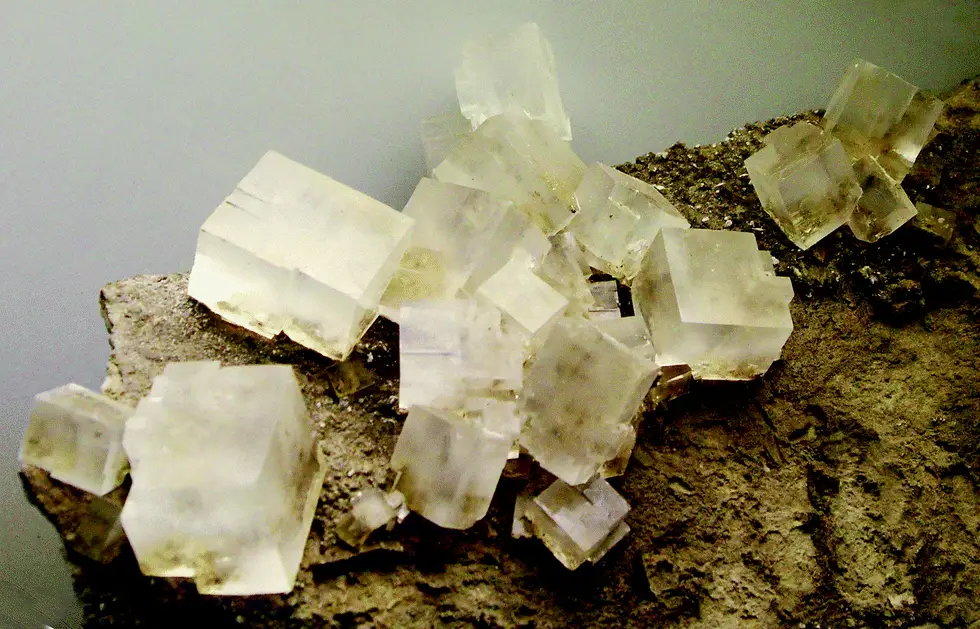As a mineral belonging to the group of compounds known as halides, there are many Bischofite mineral uses which are of interest in a wide range of industries. It is useful in health, medicine, nutrition, and even agriculture. Of these uses, some are popular all over the world while others are just starting to emerge in economic importance.
Properties of Bischofite
Bischofite mineral uses are ever-evolving as it is a hydrous form of magnesium chloride. This means the magnesium salt has a molecular structure that includes crystalline water molecules.
Physical Properties of Bischofite
These are the major physical properties of Bischofite and its granular crystals:
Appearance: Bischofite crystals have colorless to white appearance with some translucency bordering on transparency.
Crystalline Structure: Bischofite crystals have a luster that is vitreous (glasslike) with a discernible white streak. The crystals are described as demonstrating conchoidal fracture. This means they have no planar surfaces or planes of separation. The mineral can often be found in the form of massive fibrous structures with a granular arrangement.
Chemical Properties of Bischofite
Bischofite is a halide salt. The main chemical properties of Bischofite include:
Chemical Composition: The main component in Bischofite crystals is water whose molecules comprise over half of the molecular structure. The next most abundant element in the molecular structure is Chlorine, making up about a third of the volume. Magnesium is the third most abundant element in Bischofite molecular crystals. The metallic atoms make up just slightly over a tenth of the chemical structure. The rest of the Bischofite crystals is made of trace minerals and elements including some sulfates and calcium. None of these trace elements has a content percentage higher than 2% of the molecular structure.
Radioactivity: Bischofite is not radioactive
History of Bischofite as a Mineral
Bischofite as a mineral was first isolated and analyzed in 1877. This was at Stassfut and Leopoldshall in modern-day Germany. The mineral is named after Karl Gustav Bischo, a German mineral chemist and geologist who did most of the work leading to its discovery.
There are very exceptional conditions required for Bischofite deposits to form. As such, the halide mineral has been considered quite rare over the decades. For a long time, Bischofite miners relied on a few historical basins for extraction of the mineral.
They are mainly in Russia and some of the nations that used to form the Soviet Union. In recent years though, further deposits have been identified in other areas of the world. The most significant of these are those in Turkmenistan and on the Atlantic coast of the African continent. They span the Congo and the Gabonese basins.
Applications of Bischofite as a Mineral
There are many uses and applications of Bischofite as a mineral. They include:
Health and Medicinal Applications
Bischofite has some important anti-inflammatory properties. These have made it an effective component in remedies used to treat myriad diseases and conditions. They include:
– Arthritis: A disease that causes pain and stiffness in joints among the elderly.
– Osteoarthritis: A bone joint disease resulting from the breaking down of underlying bones and cartilage in the joints.
– Rheumatic fever: A disease characterized by abnormal swelling, fever, and involuntary muscle movements.
– Radiculitis: A condition characterized by pain that radiates from the dermatome of a nerve and traced to the inflammation or irritation at the root of the nerve cells.
Experiments carried out with the mineral have also shown that the halide salt significantly reduces swellings that characterize the condition known as edema of rat foot (bumblefoot). This disease affects rats, mice, and other rodents. At present, the research has moved on to human trials to identify if Bischofite is effective in remedying conditions of a similar nature that affect humans.
Applications in the Building and Construction Industry
Since the early twentieth century, Bischofite is used in a variety of applications in the building and construction industry. These uses include improving the structural strength of materials such as bricks, tiles and stained glass.
Applications in the Roads and Transport Industry
A solution containing Bischofite as the main component is effective in icing roads. Municipal and transport authorities have found the halide salt is just as effective as other salts such as sodium chloride in melting ice. However, Bischofite has the added advantage of being far less corrosive.
Applications in Agriculture and Animal Husbandry
There are many applications and solutions in the agriculture and animal husbandry industries based on the unique properties of Bischofite. Adding Bischofite to medicine, mineral supplements, and fertilizers is a significant factor in increasing crop yields, milk production, and drought resilience.
As ever more innovative Bischofite uses rise up, the halide salt increases in economic significance. Looking at the research, the magnesium salt crystals will be vital components in solutions ranging from human medicine to agricultural supplements in the coming years and decades.






